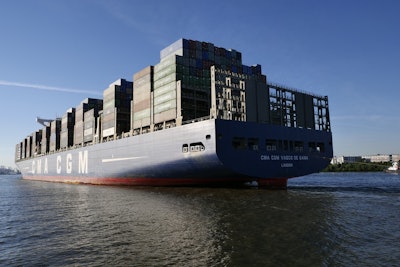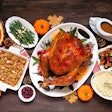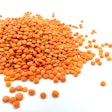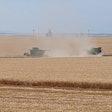
Between tariff disputes and a global pandemic, trade with China has been on a roller coaster ride the past few years.
During USDA’s Agricultural Outlook Forum Virtual Event that took place last week, Dr. Jason Grant, professor and director of the College of Agricultural and Life Sciences’ Center for Agricultural Trade at Virginia Tech, noted that the recovery in agriculture and commodity trade in 2021 was due to China's massive purchases of agricultural products.
The People's Republic of China (PRC) has a strong political desire to make sure that they are food secure. While they are investing heavily in domestic agriculture policy, they turn to the global market when they need to address feed demand requirements or diversify their diets.
Fortunately, with the large population in China, that creates a huge demand for imports.
“We have to remember food security is a critical policy goal in China,” says Grant.
“The well-known Chinese idiom ‘bread comes first’ highlights the value their citizens place on food security.
“The urbanization, fast-growing economy, increasing household income, shifting diets and the simple fact that it's home to 20% of the world's population creates an imbalance between agricultural resources -- availability and its demand for agricultural products and any uncertainty in production-related events,” he notes.
Some examples of uncertainty for China include African swine fever, which was estimated to have reduced the country's hog herd by 40% to 50%, the COVID pandemic and an increasing variable climate.
For these reasons, Grant notes, China has become the largest importer of food and agricultural products globally.
China agricultural imports have risen in 12.3 billion to over 200 billion in 2021, which is an annual growth rate around 16% on average.
China's share of global agricultural imports increased from 11% in 2012 to 17% in 2021.
U.S. - China trade
Grant says China remains a difficult and unpredictable market for U.S. ag exports largely because of inconsistent enforcement and regulations and selective intervention by China's Regulatory Authorities.
After the strained years of 2018-19, which saw both countries elevate tariffs on each other, the Phase 1 trade agreement was signed in January 2020.
Grant notes that while there has been a lot of noise about China’s purchase targets falling short, the bright spot was that the Phase 1 agreement addressed a number of long-standing non-tariff measures.
Where do we stand now with China? The previous year, 2021, was a record year of values but not necessarily volumes, says Grant.
“For 2021, it was a year of high commodity prices and high agricultural export values but not always volumes going to China,” he says
With Phase 1, China relaxed some of the non-tariff issues that were an important access gain for beef and poultry. Corn set new corn export volume records.
“Stronger exports, tighter supplies, and rebuilding of China's hog herd and feed conversions led to a surge in commodity prices,” says Grant.
Bigger pie, but less of it
According to Grant, the size of China's ag import 'pie' grew, but the U.S. got a smaller slice.
While China's purchases of U.S. products increased substantially in 2021, numbers show China increased purchases from all countries, not just the U.S.
China is the number one market for agricultural exports for many countries, not just the U.S, including Brazil, Australia, New Zealand, Uruguay and Ukraine. And it’s the number two market for the EU, Canada and Argentina.
Grant says it looks like there is an aggregate demand shift going on.
“China is diversifying its portfolio of export suppliers,” he notes.
While U.S. exports are experiencing higher trade with China, there is a declining market share for pork, wheat, grain, sorghum, feed and fodder categories, cotton and to a lesser extent soybeans dairy and tree nuts.
“The key takeaway message is the size of China's agricultural import pie, the overall pie, grew,” says Grant. “But the U.S. got a bit smaller slice of this pie as China continues to diversify its portfolio of export suppliers.”
U.S.-China trade relationship is complicated and multi-faceted, says Grant.
“U.S. producers depend on the Chinese market for the sale of their output just as Chinese consumers depend on U.S. imports for food and fiber use,” he concludes. “It's a symbiotic relationship reflective of each country's comparative advantages and disadvantages.”
Dr. Jason Grant is professor and Director of the College of Agricultural and Life Sciences’ Center for Agricultural Trade at Virginia Tech. Dr. Grant joined the Department of Agricultural and Applied Economics in 2007, after completing his Ph.D. at Purdue University.
The Agricultural Outlook Forum, which is organized by USDA’s Office of the Chief Economist together with other USDA agencies, is independent of commercial interests and aims to facilitate information sharing among stakeholders and generate the transparency that supports well-functioning open markets.



















